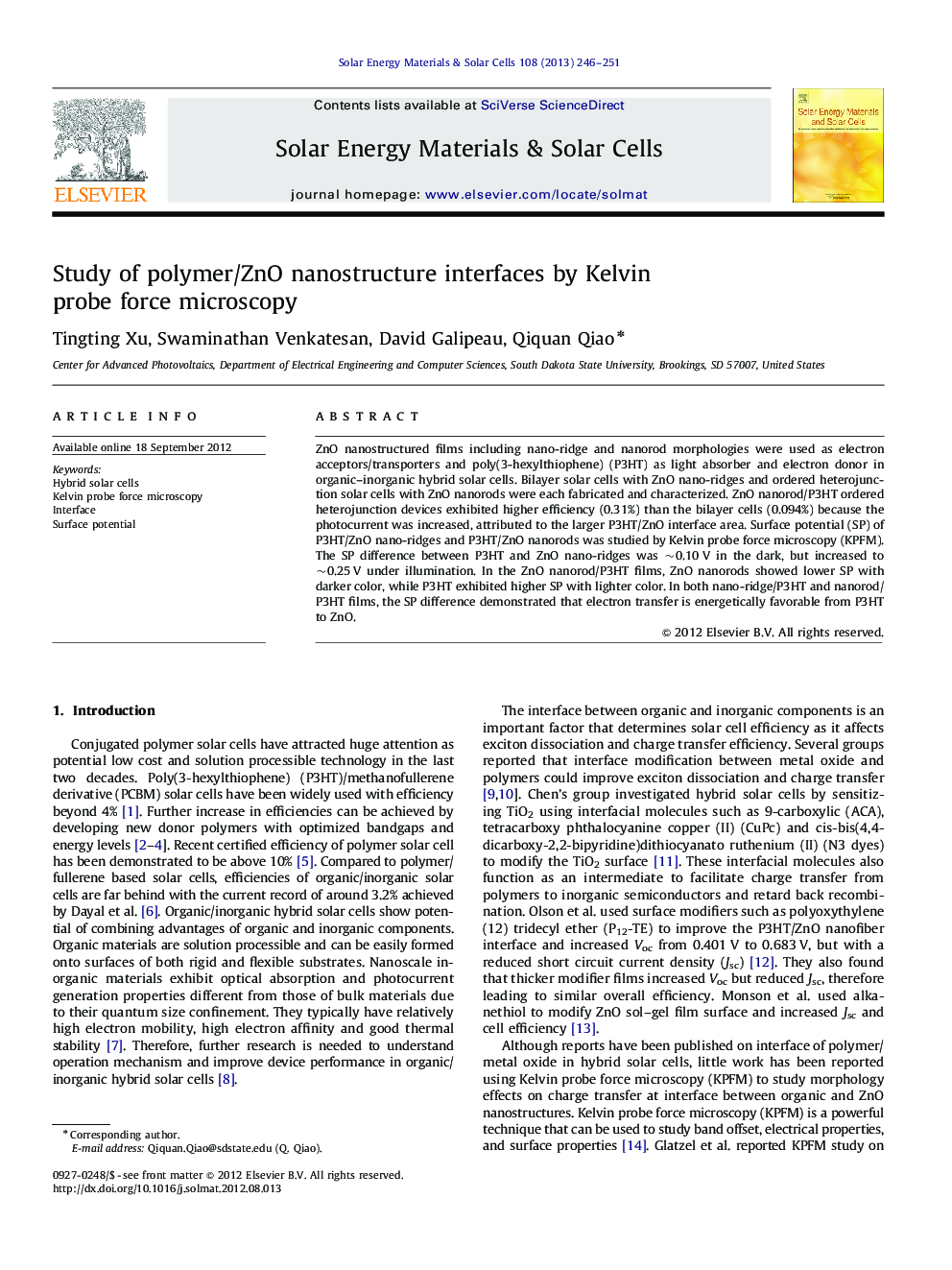| کد مقاله | کد نشریه | سال انتشار | مقاله انگلیسی | نسخه تمام متن |
|---|---|---|---|---|
| 78706 | 49340 | 2013 | 6 صفحه PDF | دانلود رایگان |

ZnO nanostructured films including nano-ridge and nanorod morphologies were used as electron acceptors/transporters and poly(3-hexylthiophene) (P3HT) as light absorber and electron donor in organic–inorganic hybrid solar cells. Bilayer solar cells with ZnO nano-ridges and ordered heterojunction solar cells with ZnO nanorods were each fabricated and characterized. ZnO nanorod/P3HT ordered heterojunction devices exhibited higher efficiency (0.31%) than the bilayer cells (0.094%) because the photocurrent was increased, attributed to the larger P3HT/ZnO interface area. Surface potential (SP) of P3HT/ZnO nano-ridges and P3HT/ZnO nanorods was studied by Kelvin probe force microscopy (KPFM). The SP difference between P3HT and ZnO nano-ridges was ∼0.10 V in the dark, but increased to ∼0.25 V under illumination. In the ZnO nanorod/P3HT films, ZnO nanorods showed lower SP with darker color, while P3HT exhibited higher SP with lighter color. In both nano-ridge/P3HT and nanorod/P3HT films, the SP difference demonstrated that electron transfer is energetically favorable from P3HT to ZnO.
Figure optionsDownload as PowerPoint slideHighlights
► Interface properties between P3HT and ZnO nanostructures were studied using KPFM.
► Different surface potential (SP) between dark and illuminated P3HT/ZnO nanoridge.
► ZnO nanorods exhibited higher efficiency than ZnO nanoridges for solar cells.
Journal: Solar Energy Materials and Solar Cells - Volume 108, January 2013, Pages 246–251